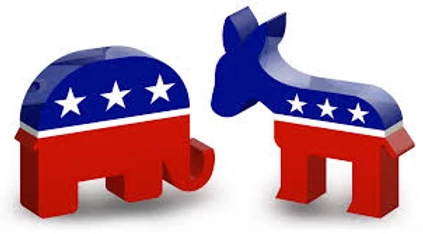
What does the election mean for investments?
Every month we will take a stab at answering some of the “hot button” questions posed by our wonderful clients or find good resources that have answered the questions adequately.
One of the big questions facing us today are the uncertainty of the upcoming elections. Below is a nice summary from a Kiplinger finance article that addresses the question well.
How the Presidential Election Will Affect the Stock Market
Kiplinger, By Anne Kates Smith, February 2016
The presidential cycle. The stock market has, for the most part, ebbed and flowed with the four-year election cycle for the past 182 years. Wars, bear markets and recessions tend to start in the first two years of a president’s term, says The Stock Trader’s Almanac; bull markets and prosperous times mark the latter half. Since 1833, the Dow Jones industrial average has gained an average of 10.4% in the year before a presidential election, and nearly 6%, on average, in the election year. By contrast, the first and second years of a president’s term see average gains of 2.5% and 4.2%, respectively. A notable recent exception to decent election-year returns: 2008, when the Dow sank nearly 34%. (Returns are based on price only and exclude dividends.)
But no one needs to tell you that the current cycle is anything but average. The Dow racked up an impressive 27% in the first year of President Obama’s second term, and 7.5% in year two. Last year, which was supposed to be the strongest of the cycle, saw the Dow industrials drop 2%. “Given that the past three years are so out of sync with the normal cycle, we’re not certain what 2016 will bring,” says Jim Stack, a market historian and publisher of the newsletter InvesTech Research.
Democrat or Republican? You may feel strongly about one party or the other when it comes to your politics, but when it comes to your portfolio, it doesn’t matter much which party wins the White House. Conventional wisdom might suggest that Republicans, who are supposedly more business-friendly than the Democrats, would be more beneficial for your stock holdings. In fact, looking back to 1900, Democrats have been slightly better for stocks, with the Dow up an average of nearly 9% annually when the Democrats are in control, compared with nearly 6% per year during Republican administrations. But normal variations in annual stock market returns dwarf that difference, says Russ Koesterich, chief investment strategist at BlackRock. He concludes that a focus on which party wins the White House is unwarranted—at least from an investing standpoint.
Divided versus united government. Another urban legend is that markets do better when government is divided, says Koesterich. The theory behind the legend, he says, is that “divided power saves both parties from their worst instincts. With neither party in control, government is somewhat neutered, leaving markets free to flourish.” But the theory isn’t borne out by history. InvesTech has looked at stock returns going back to 1928 under three separate scenarios. In the two years following an election, Standard & Poor’s 500-stock index gained 16.9%, on average, when one party controls the White House and both houses of Congress; 15.6% when one party controls both houses of Congress and the other party owns the White House; and just 5.5% when the House and Senate are divided. But a divided Congress doesn’t always lead to sub-par returns. In the two-year periods following the 2010 and 2012 elections, the S&P 500 rose 19% and 42%, respectively.
A political crystal ball. Election results may not be so great at predicting stock market returns, but the converse is not the case. It turns out that the stock market has an uncanny ability to predict who will call the White House home for the next four years. If the stock market is up in the three months leading up to the election, put your money on the incumbent party. Losses over those three months tend to usher in a new party.
The statistics are compelling. In the 22 president elections since 1928, 14 were preceded by gains in the three months prior. In 12 of those 14 instances, the incumbent (or the incumbent party) won the White House. In seven of eight elections preceded by three months of stock market losses, incumbents were sent packing. Exceptions to this correlation occurred in 1956, 1968 and 1980. According to Stack, the S&P 500 has an 86.4% success rate in forecasting the election.
Evergreen Conclusion
The above article dispels short term statistical correlation with parties. Reality is, decisions made by our leaders take years to flow into the system. They have huge effects but the timing is not usually instantaneous. The economy is like a giant ship and policy may be compared to the wheel. When the wheel is turned, it takes a long time for the giant ship to respond. Dependent on the conditions such as wind, rain, currents, and other factors the ship may take longer or shorter to respond to the wheel. Policy decisions should be taken very seriously and who we place in office deserves utmost research and attention. However, many times the current success or failure of the economy or markets can not be tied to current leadership. More often it is result of many decisions from years past that have set the ship in motion. Our next leaders will have opportunity to set this course against a back drop of conditions created from both prior leadership and natural economic forces.
Evergreen Wealth Management, LLC is a registered investment adviser. Information presented is for educational purposes only and does not intend to make an offer or solicitation for the sale or purchase of any specific securities, investments, or investment strategies. Investments involve risk and unless otherwise stated, are not guaranteed. Be sure to first consult with a qualified financial adviser and/or tax professional before implementing any strategy discussed herein. Past performance is not indicative of future performance.
